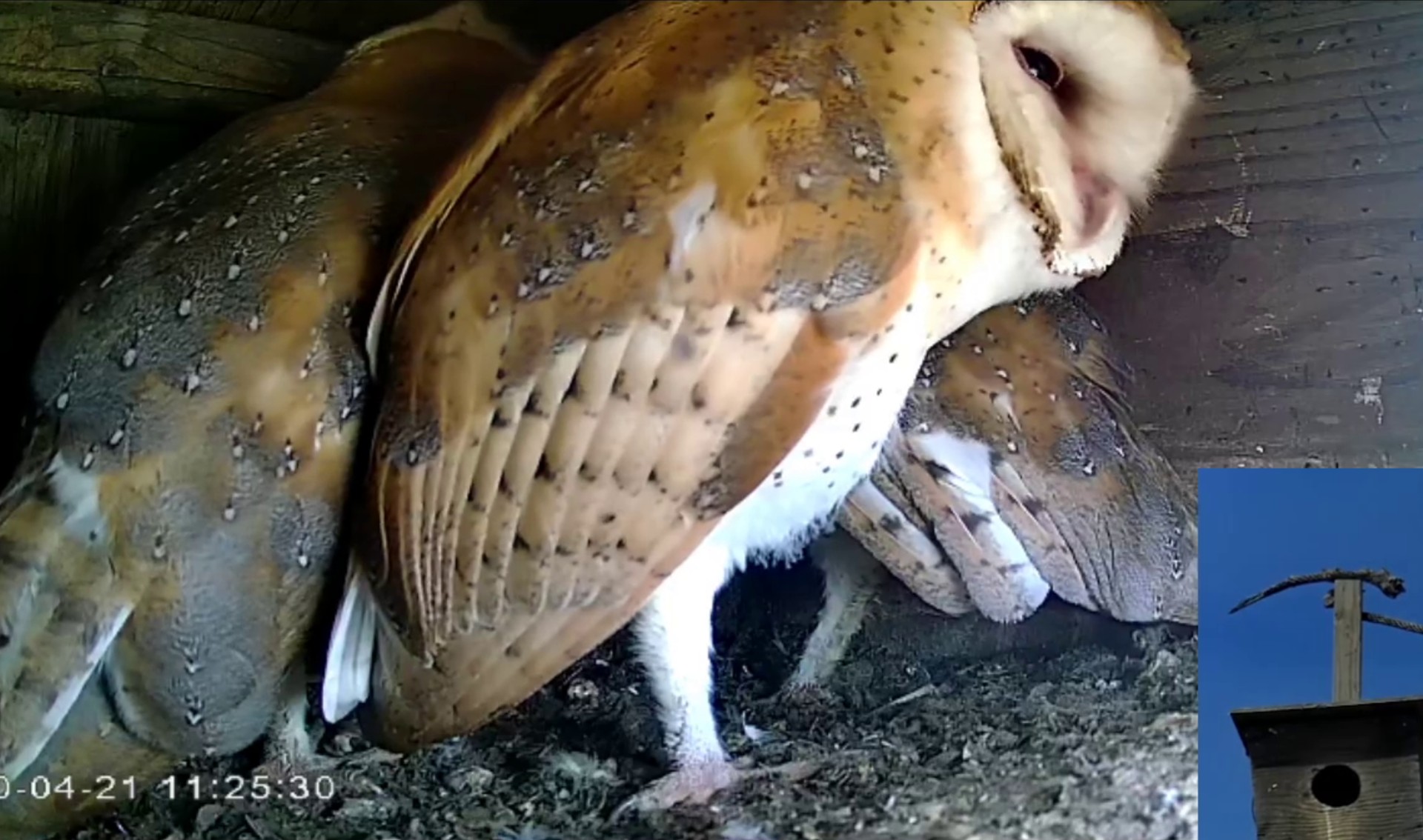Sexing - Males and Females
Sexing Barn Owls can be a difficult task!

This is a picture of three of our owlets from our first clutch. The one in the middle is a male and the other two are females: If you look closely at the male, he has lighter coloring than the other two and the lines on his wings are lighter as well. The females have darker patches of grey coloring and darker lines.
Sexing can be extremely difficult in order to tell the difference between males and females. Here are several ways to try to tell the difference:
In general, males are lighter and females are darker. Females are slightly larger and heavier with darker legs while males have paler legs. Females will typically have darker brown tiny feathers around the rim of their facial disks than the males do. But this can be only a very slight difference when trying to determine between the two, and all of these things aren’t necessarily a full-proof way to tell them apart. Coloration can vary in different areas too.
The female typically has darker grey or black bars on her tail and wings. She will also have a caramel to tan coloring on her neck and upper chest with a large amount of small black spots on the chest and the underside of her wings. Males are generally caramel or lighter brown in color and have more white underneath and down their neck and chest. They usually do not have many black spots on their chest however, some males do. So, something else to look for when trying to tell the difference, especially when they do have spots on the chest, is to look for the size of the spots and the amount of them. Females will often have more and a bit larger sized spots than males that have them, although even that isn’t always the case. She tends to be darker brown on her back with larger dark grey or black spots while the male is lighter brown with less or no darker spots. Another important thing to keep in mind is that a females darker coloring can start to fade as she gets older, so that can be a factor that comes into play, since it’s hard to tell how old an owl might be.
Our male and female pair look very much alike and can be difficult to tell them apart. Although, our female had an incident this year when her first batch of owlets were beginning to fledge, where her right eye was damaged and that has made it dramatically easier to tell the difference between them now, especially when they’re in the box. Poor thing! This injury has caused her feathers down the middle of her face and around her eye to be a bit scruffy too. Their babies have followed many of the same coloring patterns that they have.
If you want more details about this, click the button below:
